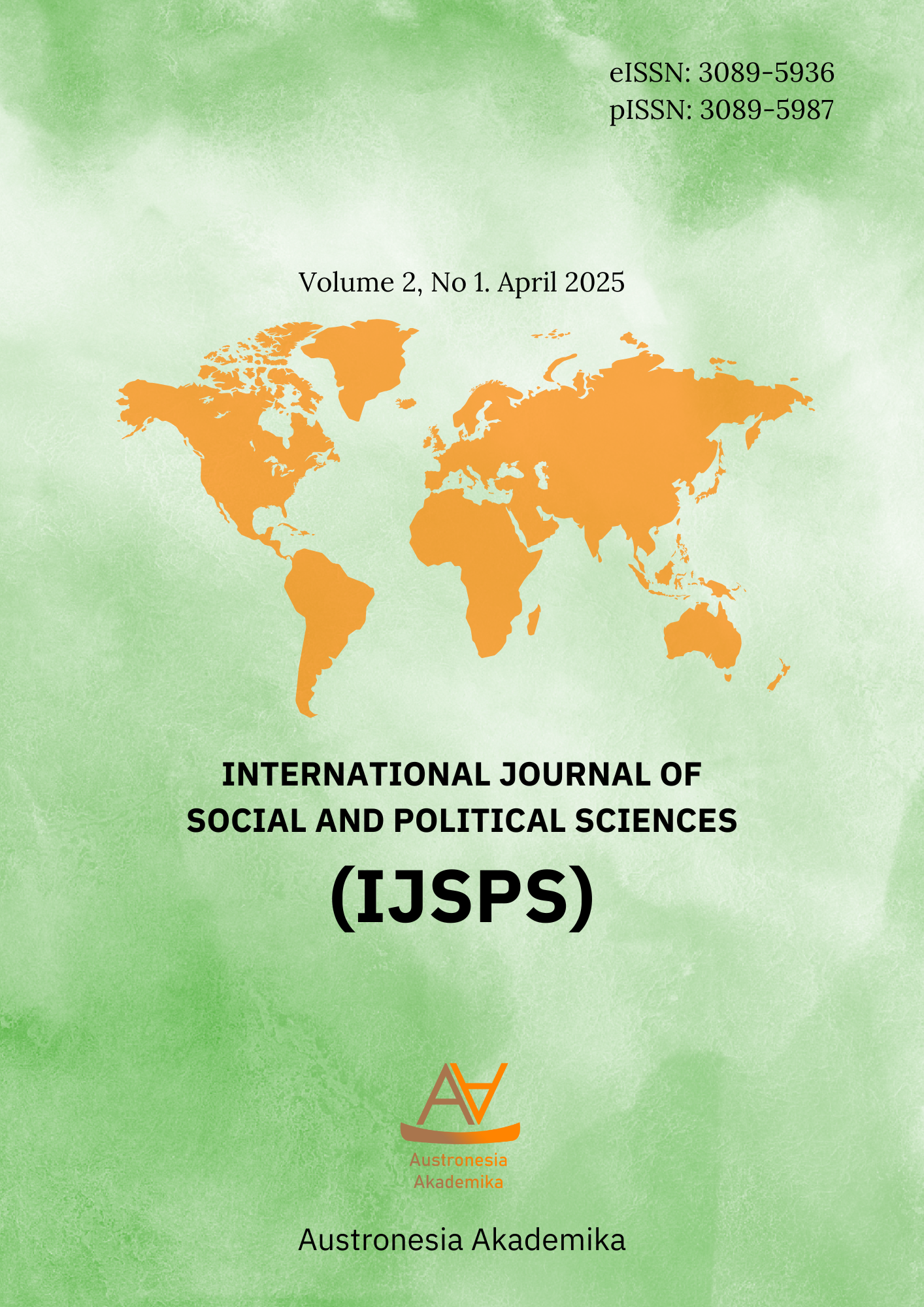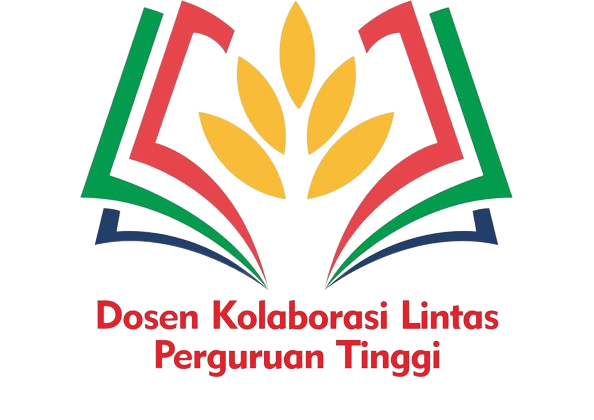Deviation in Public Policy Implementation: An Analytical Study of QRIS in Indonesia
DOI:
https://doi.org/10.69812/ijsps.v2i1.102Keywords:
Deviation, Public Policy, ImplementationAbstract
The transformation of digital payment systems has become a central focus of Indonesia’s financial inclusion agenda. One of the strategic policies in this context is the implementation of QRIS (Quick Response Code Indonesian Standard), launched by Bank Indonesia in 2019. This study aims to analyze the implementation of the QRIS policy in Indonesia from 2019 to 2025, using the theoretical and analytical framework of Mazmanian & Sabatier’s Policy Implementation Theory and Model. The research employs a descriptive qualitative approach, collecting data through literature review, policy document analysis, and secondary data from Bank Indonesia. The analysis focuses on six key variables derived from the theory: policy clarity, available resources, characteristics of implementing agencies, external environmental support, target group responses, and socio-economic conditions. The findings reveal that although the QRIS policy objectives are clearly defined and supported by adequate technological infrastructure, its implementation still faces challenges in digital literacy, adoption disparities across regions, and limited outreach to the informal sector. The coordination between implementing institutions also varies in effectiveness. In conclusion, while the national implementation of QRIS shows significant progress, its overall effectiveness depends heavily on strengthening human resources, improving policy communication strategies, and adapting to local socio-economic contexts. These findings contribute to the evaluation of technology-based public policy and offer a foundation for enhancing the effectiveness of future digital financial policies.
Downloads
References
Adriyansyah, F. D., Witarsyah, D., Syamsuar, D., Luthfi, A., Fakhrurroja, H., & Herdiansyah, M. I. (2023). Path Planning Using the Bee Colony Algorithm to Find Routes for a Coffee Plantation Using Drones. Procedia Computer Science, 227, 17–26. doi: 10.1016/j.procs.2023.10.498
Afandi, A., Rukmana, L., & R, W. W. (2022). Efektivitas dan Efisiensi Sistem Pembayaran Non Tunai Quick Response Indonesian Standard (QRIS) dalam Mempengaruhi Inklusi Keuangan Mahasiswa. BanKu: Jurnal Perbankan Dan Keuangan, 3(2), 73–83. doi: 10.37058/BANKU.V3I2.5823
Ahuja, V., Gera, R., & Chadha, P. (2021). Mobile shopping apps adoption: a systematic literature review. International Journal of Electronic Business, 16(3), 239. doi: 10.1504/IJEB.2021.10039521
Aisyah, S., Andriani, N., Rahmadyah, N., Novriansyah, D., Putri, A., & Mayori, E. (2023). Implementasi Teknologi Financial Dalam Qris Sebagai Sistem Pembayaran Digital Pada Sektor Umkm Di Kota Binjai. Jurnal Pengabdian Kepada Masyarakat Indonesia (JPKMI), 3(1), 12–18. doi: 10.55606/JPKMI.V3I1.925
Amelia, R., Arahman, H., Sinaga, R. B., Rivai, A., & Novirsari, E. (2023). The Effectiveness and Efficiency of the Quick Response Indonesian Standard (Qris) Non-Cash Payment System in Influencing Sales at Coffeeshops in Medan City. ProBisnis : Jurnal Manajemen, 14(6), 747–755. doi: 10.62398/PROBIS.V14I6.426
Astari, A. A. E., Yasa, N. N. K., Sukaatmadja, I. P. G., & Giantari, I. G. A. K. (2022). Integration of technology acceptance model (TAM) and theory of planned behavior (TPB): An e-wallet behavior with fear of covid-19 as a moderator variable. International Journal of Data and Network Science, 6(4), 1427–1436. doi: 10.5267/J.IJDNS.2022.5.008
Azzahroo, R. A., & Estiningrum, S. D. (2021). Preferensi Mahasiswa dalam Menggunakan Quick Response Code Indonesia Standard (QRIS) sebagai Teknologi Pembayaran. Jurnal Manajemen Motivasi, 17(1), 10. doi: 10.29406/JMM.V17I1.2800
Balakrishnan, V., & Eesan, M. L. (2024). Enablers and disablers for contactless payment acceptance among Malaysian adults. Humanities and Social Sciences Communications, 11(1). doi: 10.1057/S41599-024-03057-7
Candra Sari, A., Hermawan, H., & Hermawan Adinugraha, H. (2021). Implementation of QRIS-Based Payments Towards the Digitalization of Indonesian MSMEs. EKONOMIKA SYARIAH : Journal of Economic Studies, 5(2), 124–139. doi: 10.30983/ES.V5I2.5027
Duykers, J. L., Ardana, K., Yulistiani, R., Irwansyah, E., & Fitrianah, D. (2023). Identifying Factors for Supporting Early Warning Flood using Clustering Approach And Geo-Spatial Analysis. Procedia Computer Science, 227, 540–547. doi: 10.1016/j.procs.2023.10.556
Graupner, E., Trenz, M., & Maedche, A. (2021). When does digital matter Analysing customers preference for digital processes. International Journal of Electronic Business, 16(2), 1. doi: 10.1504/IJEB.2021.10038071
Gultom, M. S., Salsabila, H., & Amri, A. (2023). Preferensi Generasi Milenial dalam Menggunakan QRIS sebagai Alat Pembayaran Digital. Jurnal Inovasi Pendidikan Ekonomi (JIPE), 13(1), 19. doi: 10.24036/011194030
Gunawan, A., Fatikasari, A. F., & Putri, S. A. (2023). The Effect of Using Cashless (QRIS) on Daily Payment Transactions Using the Technology Acceptance Model. Procedia Computer Science, 227, 548–556. doi: 10.1016/J.PROCS.2023.10.557
Hamzah Muchtar, E., Trianto, B., Maulana, I., Alim, M. N., Marasabessy, R. H., Hidayat, W., Junaedi, E., & Masrizal, M. (2024). Quick response code Indonesia standard (QRIS) E-payment adoption: customers perspective. Cogent Business and Management, 11(1), 1. doi: 10.1080/23311975.2024.2316044
Indriani, A., Mulya Syamsul, E., & Gumilang Lestari, A. (2023). Quick Response Code Indonesian Standard (QRIS), Penjualan dan Kepuasan Pelanggan: Al-Kharaj : Jurnal Ekonomi, Keuangan & Bisnis Syariah, 5(4), 1482–1492. doi: 10.47467/ALKHARAJ.V5I4.2233
Kiselicki, M., Kirovska, Z., Josimovski, S., & Anastasovski, M. (2022). E-Commerce as a Revenue Generator for Small and Medium Companies in Developing Countries. Economics and Culture, 19(2), 47–56. doi: 10.2478/JEC-2022-0015
Lonardi, H., & Legowo, N. (2021). Analysis of Factors Affecting Use Behavior of QRIS Payment System in DKI Jakarta. Turkish Journal of Computer and Mathematics Education. 3709 Research Article, 12(6), 3709–3728.
Muniarty, P., Dwiriansyah, M. S., Wulandari, W., Rimawan, M., & Ovriyadin, O. (2023). Efektivitas Penggunaan QRIS Sebagai Alat Transaksi Digital Di Kota Bima. Owner, 7(3), 2731–2739. doi: 10.33395/OWNER.V7I3.1766
Musyaffi, A. M., & Kayati, K. (2020). Dampak Kemudahan dan Risiko Sistem Pembayaran QR Code: Technology Acceptance Model (TAM) Extension. Jurnal Inspirasi Bisnis Dan Manajemen, 3(2), 161. doi: 10.33603/JIBM.V3I2.2635
Nurqamarani, A. S., Fadilla, S., & Juliana, A. (2024). Revolutionizing Payment Systems: The Integration of TRAM and Trust in QRIS Adoption for Micro, Small, and Medium Enterprises in Indonesia. Journal of Information Systems Engineering and Business Intelligence, 10(3), 314. doi: 10.20473/JISEBI.10.3.314-327
Pratiwi, A. (2022). The Effectiveness of the Implementation of the Indonesian Standard Quick Response Payment System (QRIS) on MSMEs in Banten. Review of Accounting and Taxation, 1(02), 93–99. doi: 10.61659/REACTION.V1I02.143
Ramayanti, R., Azhar, Z., & Nik Azman, N. H. (2025). Factors influencing intentions to use QRIS: A two-staged PLS-SEM and ANN approach. Telematics and Informatics Reports, 17. doi: 10.1016/j.teler.2024.100185
Sendjaja, T., Rachbini, D. J., Astini, R., & Asih, D. (2023). The Effectiveness of QRIS Transaction Implementation During the COVID-19 Pandemic. International Journal of Science and Society, 5(5), 1–8. Retrieved from http://ijsoc.goacademica.com
Setiyono, T. A. (2021). Indonesian’s Acceptance of Non-Cash Transaction Using Qris. Proceedings of the 3rd International Conference on Banking, Accounting, Management and Economics (ICOBAME 2020), 169. doi: 10.2991/AEBMR.K.210311.027
Sihaloho, J. E., Ramadani, A., & Rahmayanti, S. (2020). Implementasi Sistem Pembayaran Quick Response Indonesia Standard Bagi Perkembangan UMKM di Medan. Jurnal Manajemen Bisnis, 17(2), 287. doi: 10.38043/JMB.V17I2.2384
Yuliati, T., & Handayani, T. (2021). Pendampingan Penggunaan Aplikasi Digital Qris Sebagai Alat Pembayaran Pada UMKM. Community Development Journal : Jurnal Pengabdian Masyarakat, 2(3), 811–816. doi: 10.31004/CDJ.V2I3.2612
Downloads
Published
How to Cite
Issue
Section
License
Copyright (c) 2025 Nabila Nabila, Salsabilla Amalia Putri

This work is licensed under a Creative Commons Attribution-ShareAlike 4.0 International License.
You are free to:
- Share — copy and redistribute the material in any medium or format for any purpose, even commercially.
- Adapt — remix, transform, and build upon the material for any purpose, even commercially.
- The licensor cannot revoke these freedoms as long as you follow the license terms.
Under the following terms:
- Attribution — You must give appropriate credit, provide a link to the license, and indicate if changes were made . You may do so in any reasonable manner, but not in any way that suggests the licensor endorses you or your use.
- ShareAlike — If you remix, transform, or build upon the material, you must distribute your contributions under the same license as the original.
- No additional restrictions — You may not apply legal terms or technological measures that legally restrict others from doing anything the license permits.













